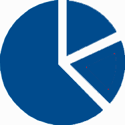Mobile is Now
Smart phones and other devices have become essential tools to navigate our daily life, helping us to read news, contact friends, and see new photos of loved ones. But beyond that, smart phones and tablets have become a part of the standard toolbox for any working professional. In the Oil and Gas sector, mobile access has become a requirement for an increasingly connected workforce. As of 2016, 80% of O&G CEOs we surveyed plan to invest the same or more into digital technologies over the next 3-5 years.

 or a process in place? Although there are many steps involved, the following will give you a glimpse of what an effective EPAP process looks like.
or a process in place? Although there are many steps involved, the following will give you a glimpse of what an effective EPAP process looks like.